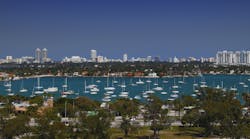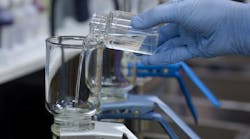The Water Research Foundation (WRF), completed bench- and pilot-scale testing to explore treatment process efficacies for removing hexavalent chromium (Cr(VI)) from the District’s groundwater supplies. The primary goals of this study were to evaluate Cr(VI) removal performance of strong base anion exchange (SBA-IX) and to compare and validate commercially available SBA-IX resin performance in terms of Cr(VI) exchange capacity, regeneration quality, and frequency requirements. These tests also investigated innovative brine management techniques including brine reuse and treatment methods, which would render the spent brine waste less hazardous and reduce expenses due to costly disposal.
The California State Water Resources Control Board (SWRCB) Department of Drinking Water (DDW) adopted the nation’s first “maximum contaminant level” (MCL) for hexavalent chromium in drinking water, which has been demonstrated to be a human carcinogen when inhaled at elevated levels. Soquel Creek Water District in California represents one of the many districts heavily impacted by this new MCL and the potential implications of increased treatment process costs. Together with WRF, a research study was developed to explore full-scale treatment design and answer key operational questions that may impact utility capital and lifecycle costs.
The study was broken into two phases. The first phase, SBA-IX testing at a bench-scale level, addressed three primary goals:
- Determining optimal empty bed contact time (EBCT) to conduct subsequent experiments
- Screening SBA-IX resins to identify the best performing resin for the District’s wells
- Demonstrating SBA-IX treatment performance through multiple loading and regeneration cycles
The second phase, on-site pilot-scale testing, was conducted at the District’s San Andreas well site and addressed its own set of goals:
- Demonstrating bench-scale results could be replicated at pilot-scale
- Determining the feasibility of reusing the sodium chloride regenerant brine
- Generating sufficient brine to conduct treatment investigations at bench-scale
Research conducted with water from the Soquel Creek Water District San Andreas well proved that SBA-IX can be effective for Cr(VI) treatment under the given water quality conditions . At bench and pilot-scales, commercially available SBA-IX resins were able to achieve a high treatment capacity. The feasibility of direct brine reuse was also proven at pilot-scale. High treatment capacities along with brine reuse and treatment approaches reduce the typical challenges associated with SBA-IX treatment, namely large volumes of spent brine requiring costly disposal. These results are encouraging for other water utilities, particularly those in California with similar raw water quality conditions that may soon be impacted by the final Cr(VI) MCL.
Source: The Water Research Foundation






